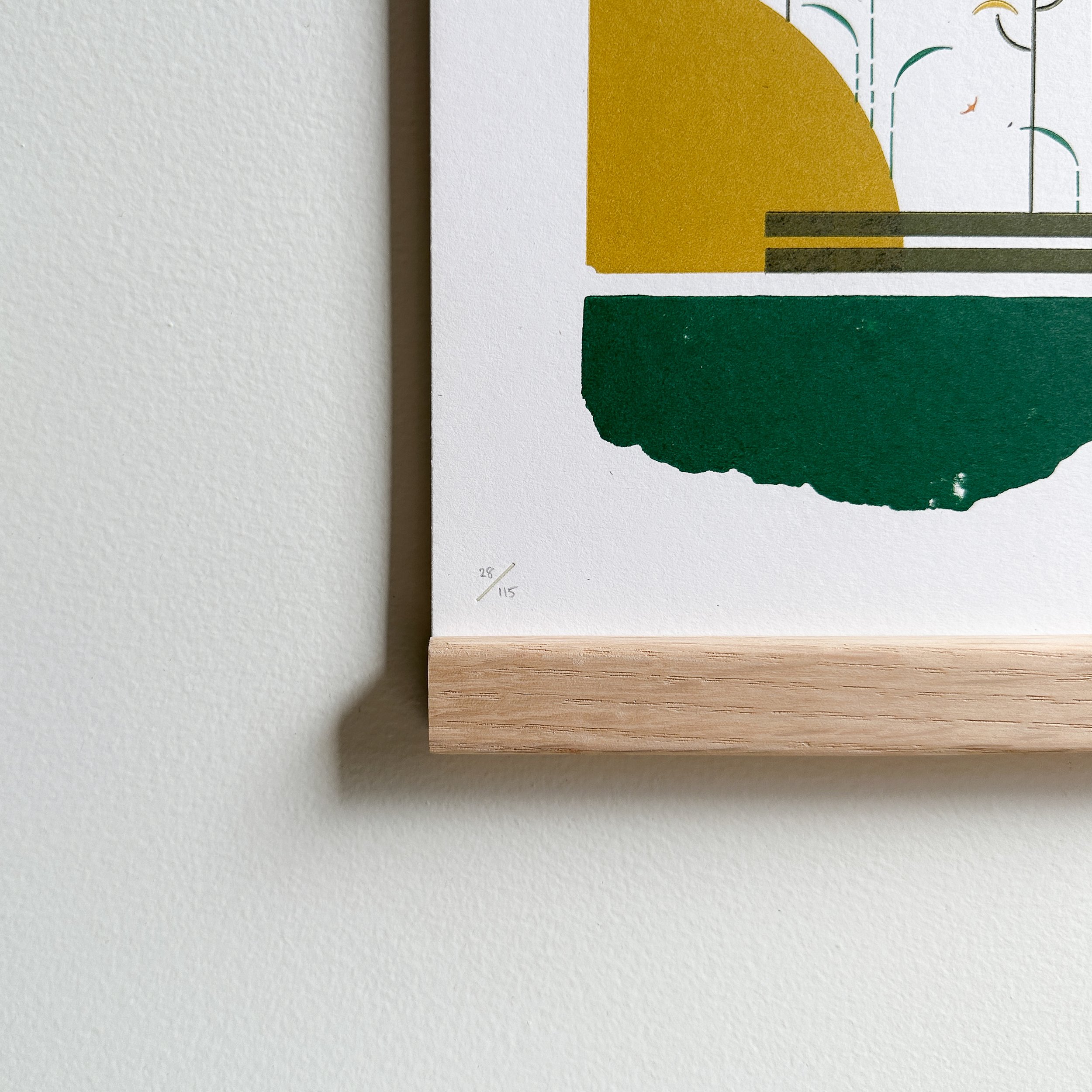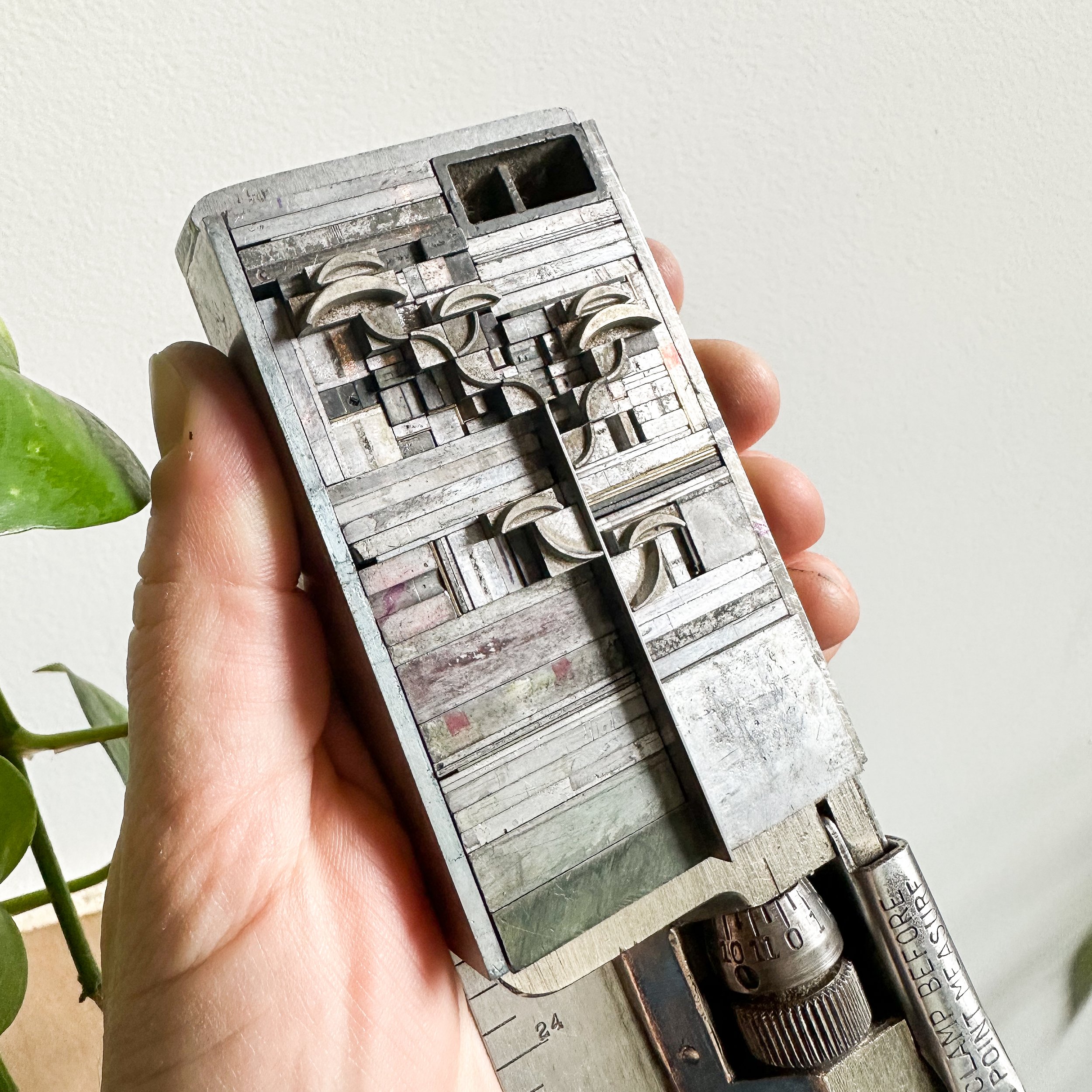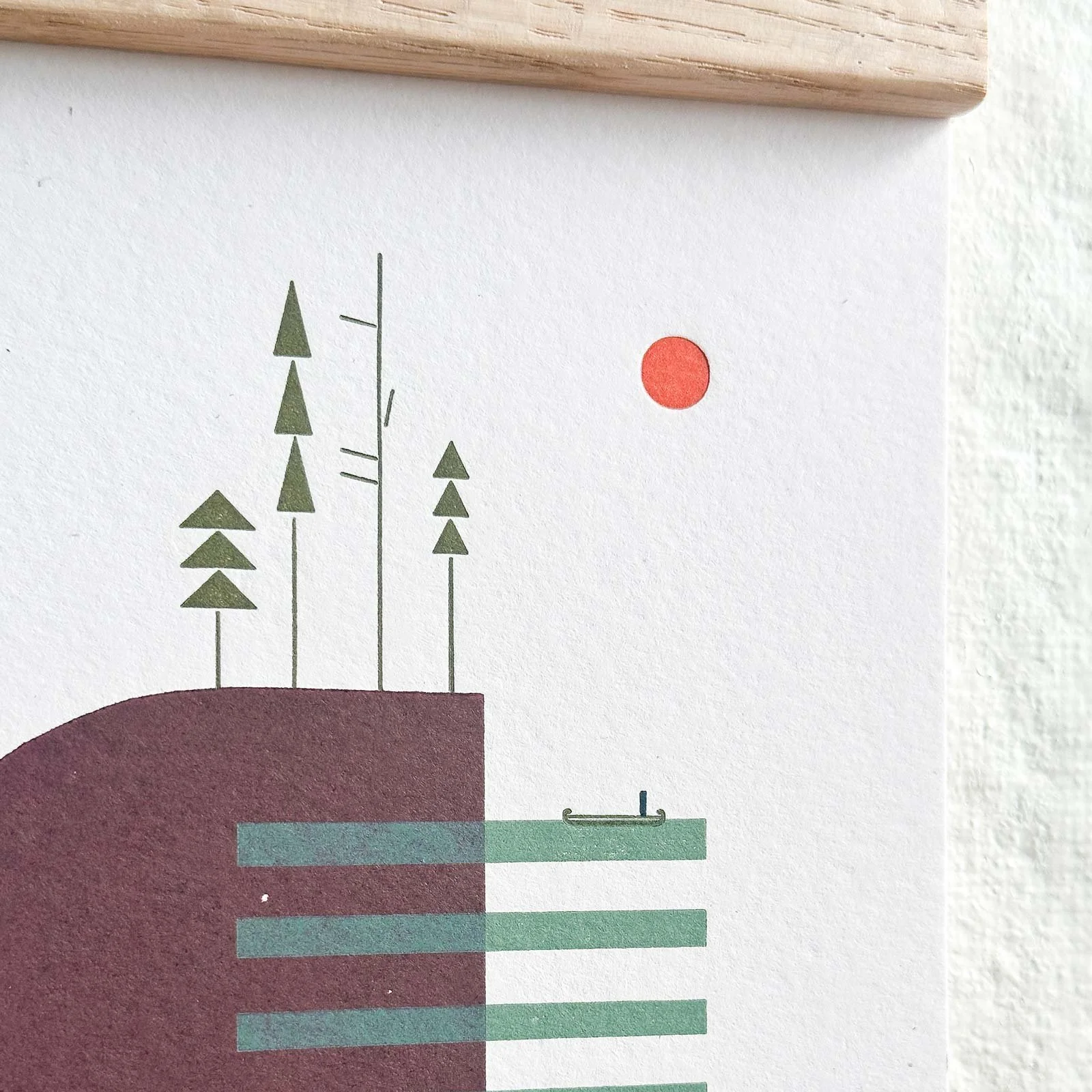6 x 8" The Collpa Print









6 x 8" The Collpa Print
Limited edition 6 x 8” letterpress print from the Lungs of the Earth Collection about my time spent deep in the Peruvian Amazon Rainforest for an ACEER Foundation Artist Residency. Please read the Artist Statement below to learn more.
-limited edition of 115 prints (these will not be reprinted).
-printed with vintage metal ornaments, punctuation & border rule, an antique copper cut, and a handmade torn paper printing block
-printed on 100% recycled paper from French Paper Co, a Michigan-based paper mill operating on 100% hydropower
-$10 of every print sold will be donated to the ACEER Foundation and designated for the fight against the proposed highway corridor threatening the survival of the Maijuna Indigenous Community and the vastly biodiverse rainforest where the Maijuna sustainably live off the land. (Learn more via the artist statement below). For wholesale prints, there will be a $3 donation per print.
-one native tree planted in a National Forest through the National Forest Foundation with purchase. Learn more about my One Tree Planted initiative here.
-ships with numbered & signed Certificate of Authenticity
-handmade in Pittsburgh, Pennsylvania
Matting & Framing Available:
Choose No Mat, a Standard 11 x 14” Mat, or Matted in Handmade Maple Frame when adding to cart.
Standard 11 x 14” Mat: an economical option for the DIY-framer who wants the hard part done for them! This mat makes the print fit into a standard size 11 x 14” frame.
Matted in Handmade Maple Frame: The highest quality option for enjoying your print on the wall right away! These maple wood frames, handmade by my local friend Wilson Juring, are gallery-quality with corner splines and anti-glare & UV-protecting plexiglass. Frames are sealed in the back for protection from dust and debris and come with an attached envelope with frame care instructions, the Certificate of Authenticity and a printed copy of the artist statement.
The Collpa Artist Statement:
This torn tropical landscape is a part of my Lungs of the Earth Collection about my time spent deep in the Peruvian rainforest for the ACEER Foundation Artist Residency. My goal with this residency has been to create colorful artwork that shares the story of the vulnerable biodiverse rainforest and the Indigenous Maijuna community in their fight against a proposed highway corridor threatening their land and livelihood.
The landscapes from this collection share the beauty of the primary rainforest that would be lost from the habitat fragmentation which would occur if the proposed highway corridor were to be built in full, cutting directly through the Maijuna-Kichwa Regional Conservation Area (MKRCA) and titled ancestral lands of the Maijuna. The highway “development corridor” is proposed to be 10 km wide and 130 km long, traveling from the Peruvian city of Iquitos to Colombia. This construction would fragment the forest and open it up to uncontrolled colonization, deforestation and environmental destruction. The MKRCA protects over a million acres of primary rainforest that is a biodiversity hotspot and massive carbon sink vital in the global battle against climate change, and its protection safeguards the cultural identity and physical survival of the vulnerable Indigenous Maijuna who sustainably live off the land.
I illustrated these landscapes as floating islands with a torn bottom edge to represent the tearing apart of the Earth and ecosystem that a 10 km-wide highway corridor would cause. When habitats are fragmented like this, animal migration paths are severed, creating smaller and smaller isolated islands of native habitat, diminishing the natural resources that support the inhabitants of that area, including the larger mammals of the forest and the Indigenous Peoples who depend on the ecosystem for survival, like the Maijuna.
My artist residency was unlike most typical residencies in that I went with a group of scientists, not fellow artists, and I assisted in field research during most of my days. Our field research involved trekking miles through the rainforest brush, following Maijuna hunters who cleared a path and led the way with a machete. The hunters were leading us to some of their hunting spots: mineral licks where large animals in the rainforest gather.
Mineral licks, called “Collpas” in the local Spanish dialect, are swampy forest habitats often at the base of a hillside where a “face” of clay-like mineral-rich soil is exposed. The animals, from large tapir and peccary to sloths, monkeys and parrots, gather to lick this face of mineral-rich soil to supplement their diets, and the Maijuna sustainably hunt some of these larger animal visitors in order to feed their families. The collpas are an essential part of the sustainable rainforest ecosystem.
The scientists and I were led to the collpas to collect soil samples & set camera traps to show proof of the existence of these larger animals and that these collpas are culturally & economically important to the survival of the Maijuna. If the proposed highway construction continues, many of these essential collpas will be destroyed, causing a chain effect of malnourishment throughout the region.
$10 of every print sold will be donated to the ACEER Foundation and designated for the fight against the proposed highway corridor threatening the survival of the Maijuna Indigenous Community. If you would like to help the Maijuna, the rainforest and help fight climate change, please also consider signing the petition at change.org — search “Maijuna” on their home page to find where to sign — thank you kindly!










